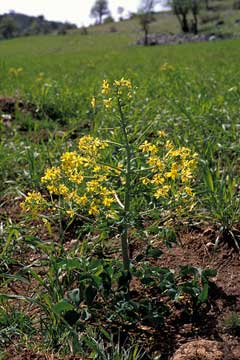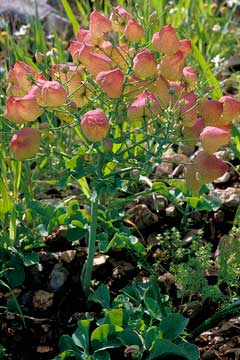 |
|
http://www.flickr.com/photos/nturland/ |
 |
| http://www.flickr.com/photos/nturland/ |
Translate this page:
Summary
Physical Characteristics

 Leontice leontopetalum is a PERENNIAL growing to 0.5 m (1ft 8in).
Leontice leontopetalum is a PERENNIAL growing to 0.5 m (1ft 8in).
See above for USDA hardiness. It is hardy to UK zone 6. It is in flower from April to May. The species is hermaphrodite (has both male and female organs).
Suitable for: light (sandy), medium (loamy) and heavy (clay) soils and prefers well-drained soil. Suitable pH: mildly acid, neutral and basic (mildly alkaline) soils. It cannot grow in the shade. It prefers dry or moist soil and can tolerate drought.
UK Hardiness Map
US Hardiness Map
Synonyms
Plant Habitats
Cultivated Beds;
Edible Uses
Edible Parts:
Edible Uses: Drink
The tuber is said to contain a significant quantity of starch, from which a liquor is distilled[280].
References More on Edible Uses
Medicinal Uses
Plants For A Future can not take any responsibility for any adverse effects from the use of plants. Always seek advice from a professional before using a plant medicinally.
Antidote Antispasmodic Epilepsy Leprosy Miscellany
The tuber is used as a cure for epilepsy and leprosy. It is also said to be an antidote to opium[61, 89].
References More on Medicinal Uses
The Bookshop: Edible Plant Books
Our Latest books on Perennial Plants For Food Forests and Permaculture Gardens in paperback or digital formats.

Edible Tropical Plants
Food Forest Plants for Hotter Conditions: 250+ Plants For Tropical Food Forests & Permaculture Gardens.
More

Edible Temperate Plants
Plants for Your Food Forest: 500 Plants for Temperate Food Forests & Permaculture Gardens.
More

More Books
PFAF have eight books available in paperback and digital formats. Browse the shop for more information.
Shop Now
Other Uses
References More on Other Uses
Cultivation details
Regional Crop Regional Crop
Succeeds in an ordinary well-drained soil[1]. Plants require plenty of moisture during their winter-spring growing period and then a warm dry rest period in the summer[280]. In cool moist temperate climates they are best grown in a bulb frame and kept completely dry in the summer[200]. They can succeed outdoors in warm dry areas[200]. The tuber should not be covered when planting[1]. This is a strange report when considered against the report that seeds pull themselves down 15 - 30cm into the soil when they germinate - see below.
Carbon Farming
-
Regional Crop
These crops have been domesticated and cultivated regionally but have not been adopted elsewhere and are typically not traded globally, Examples in this broad category include perennial cottons and many nuts and staple fruits.
-
Regional Crop
These crops have been domesticated and cultivated regionally but have not been adopted elsewhere and are typically not traded globally, Examples in this broad category include perennial cottons and many nuts and staple fruits.
References Carbon Farming Information and Carbon Sequestration Information
Temperature Converter
Type a value in the Celsius field to convert the value to Fahrenheit:
Fahrenheit:
The PFAF Bookshop
Plants For A Future have a number of books available in paperback and digital form. Book titles include Edible Plants, Edible Perennials, Edible Trees,Edible Shrubs, Woodland Gardening, and Temperate Food Forest Plants. Our new book is Food Forest Plants For Hotter Conditions (Tropical and Sub-Tropical).
Shop Now
Plant Propagation
Seed - sow 3 - 4 seeds in each pot of deep soil in a greenhouse, covering the seed with 2cm of soil. It germinates in the autumn and pulls itself down 15 - 30cm deep into the soil before the first leaves appear in the spring[130, 200]. If necessary, thin the plants to the best one in each pot and grow them on for at least three years in their pots before trying them outdoors. Give regular weak liquid feeds to ensure that the plants do not become nutrient deficient. Plants are very slow growing and can take several years before they first flower[280].
Other Names
If available other names are mentioned here
Native Range
TEMPERATE ASIA: Iran, Iraq, Israel, Lebanon, Syria, Turkey, Kazakhstan, Kyrgyzstan, Tajikistan, Turkmenistan, Uzbekistan TROPICAL ASIA: Pakistan EUROPE: Bulgaria, Greece (incl. Crete) AFRICA: Algeria, Egypt
Weed Potential
Right plant wrong place. We are currently updating this section.
Please note that a plant may be invasive in one area but may not in your area so it's worth checking.
Conservation Status
IUCN Red List of Threatened Plants Status :

Growth: S = slow M = medium F = fast. Soil: L = light (sandy) M = medium H = heavy (clay). pH: A = acid N = neutral B = basic (alkaline). Shade: F = full shade S = semi-shade N = no shade. Moisture: D = dry M = Moist We = wet Wa = water.
Now available:
Food Forest Plants for Mediterranean Conditions
350+ Perennial Plants For Mediterranean and Drier Food Forests and Permaculture Gardens.
[Paperback and eBook]
This is the third in Plants For A Future's series of plant guides for food forests tailored to
specific climate zones. Following volumes on temperate and tropical ecosystems, this book focuses
on species suited to Mediterranean conditions—regions with hot, dry summers and cool, wet winters,
often facing the added challenge of climate change.
Read More
Expert comment
Author
L.
Botanical References
89200280
Links / References
For a list of references used on this page please go here
Readers comment